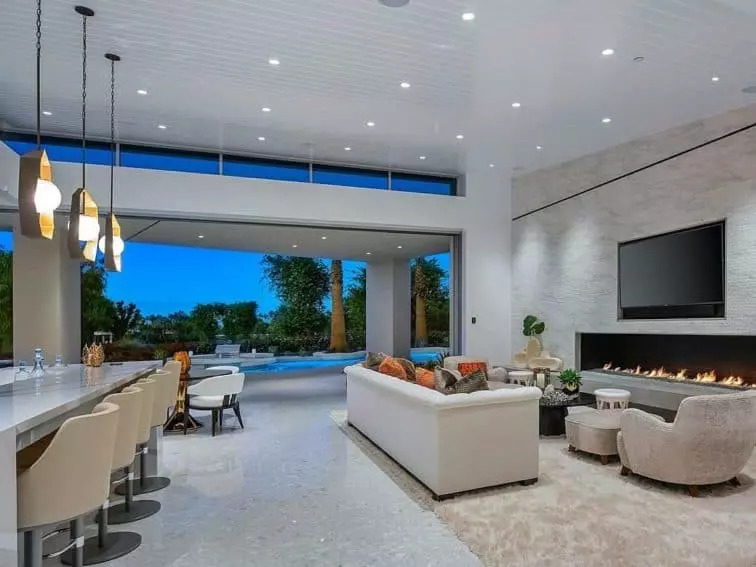
Are you sabotaging your listing's chances with poor photos? A compelling listing description is incomplete without captivating real estate photography that showcases the property. Unfortunately, many agents make avoidable mistakes when attempting to photograph their listings. We spoke to Chris Miller, a seasoned real estate professional from Imagine Imagery, a highly regarded resource for agents in Palm Springs, to discover the secrets of capturing powerful property images.
Not shooting with the light
If you lack additional lighting resources such as a flash or strobes, you'll have to work with the available natural light. This means you must take advantage of the light present in the space. Shooting against the natural light is a common mistake. Instead, as Miller explains, "You have to shoot with the window light. You have to stand by the window and shoot into the room. You could do that with a phone and get good pictures if there's decent light in the room."
One challenge agents face is trying to capture the room, windows, and view in a single image. This can be difficult without proper photography training. Professional equipment and expertise can help achieve the perfect shot, but if you're on your own, it's better to accept your limitations and shoot with the available light to ensure each photo looks its best.
 Copyright Chris Miller/Imagine Imagery
Copyright Chris Miller/Imagine Imagery
Not buying the right lens
Real estate agents often love the ultra-wide look because it makes rooms appear more spacious. Achieving this look largely depends on using the right lens. Miller advises, "You need a wide-angle lens. Phones do not have wide-angle lenses." If you're using a DSLR, he recommends a focal length between 15-16mm. Smartphones typically have a focal length of around 28mm. For agents using smartphones, Miller suggests considering a Moment Lens, an attachable lens that can help achieve the desired wide-angle effect.
Forgetting to balance the color of the light
Have you ever wondered why natural light in a photo appears blue while light from a lamp looks orange? Miller explains this phenomenon as a matter of color balance. Daylight has a color temperature of around 5000 Kelvin, while regular bulbs in homes emit warmer light at around 2800 to 3000 Kelvin. Mixing the two light sources can make it tricky to balance colors.
For amateur real estate photography, Miller recommends a simple fix: "You can turn all the lights in the house off and go straight with window light. If I was shooting with a phone, that's what I would do." As a professional, he uses strobes to light an interior and ensure the same color temperature throughout the photo, resulting in a crisp and accurate image.
For more technical insights on this aspect of real estate photography, check out Miller's in-depth discussion on the Shooting Spaces Podcast.
Not hiring a professional
Real estate photography can be highly technical, and attempting to capture a good photo on your own can consume a significant amount of time that could be better spent on your real estate business. Miller advises, "You do what you do well, and let me do what I do well." While the upfront cost of hiring a photographer may seem significant, Miller suggests that smart agents send professional photographers to every listing, regardless of the property's price. They understand that the images associated with each listing reflect their professionalism, which reassures buyers, including potential ones, that they are in good hands.
It all comes down to the concept of working on your business rather than in your business. Are you here to become a photography expert, or would you rather outsource that aspect and focus on selling homes?
 Copyright Chris Miller/Imagine Imagery
Copyright Chris Miller/Imagine Imagery
Underestimating the need for drones
Miller emphasizes the importance of using a drone for every shoot he does. Even in regions without breathtaking views, drones can provide a better angle of the entire property. He advises flying the drone a few feet overhead to capture a shot of the full house, including a nice angle of the roofline.
Wasting good photos
Miller often finds it surprising when agents receive great photos but fail to utilize them on social media. He notes, "I have real estate agents who are on Instagram and Facebook, but they just use the pictures to put on the listing for the house. I've always thought of professional photography for real estate agents as being just as much a tool to sell the agent as to sell the house."
Displaying low-quality pictures can discourage prospective clients from hiring an agent, but clean and professional photos signal expertise and a high level of service. Remember the power of good real estate photography in the era of Pinterest, Instagram, and other visual-focused platforms. Today, the majority of buyers begin their search online and expect professional quality images. A great photo can inspire and motivate potential buyers to view the property, while also indicating to future sellers that you are an agent who takes their role seriously.












